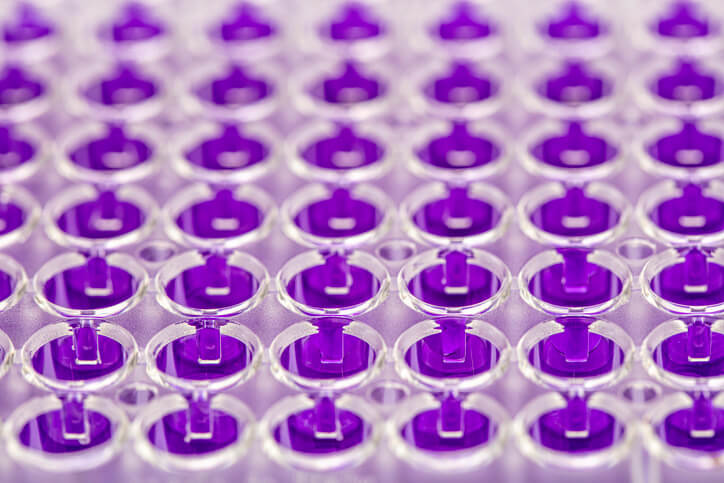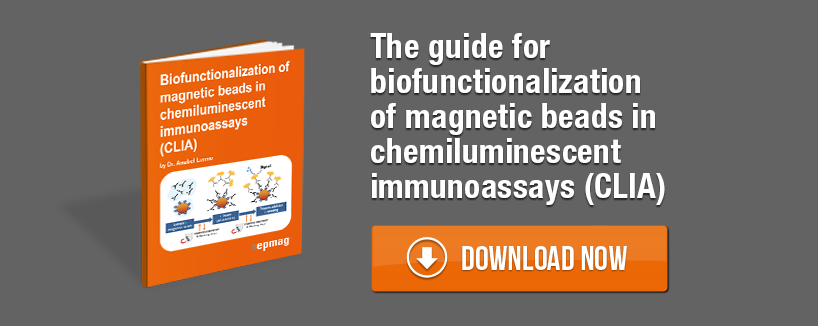Advantages of the CLIA
There are many types of assays that can be performed for detection of a molecule of interest, all with their own advantages and disadvantages. Many scientists choose to perform chemiluminescent immunoassays over the enzyme-linked immunosorbent assays (ELISA), fluorescence or radioimmunoassays. This is because the CLIA has been shown to have an improve detection at lower concentration and a wide dynamic range.

This means that the CLIA can correctly detect a wide range of concentrations of the molecule of interest without the need for concentrating or diluting samples. The design of several types of CLIA-labels allows scientists to develop a CLIA with best precision at the low-end concentration of analyte and low background signal. Being able to correctly detect positive samples for a certain analyte, with fewer false negatives making sure that those with the presence ofthe analyte of interest are properly diagnosed.
The use of magnetic beads improves the separation steps in the CLIA assay, minimizing sample typical interferences and making easier the removal of the tracer that is not bound to the analyte of interest. eThis also makes development easier by ensuring consistent and easy washing and separating steps. Magnetic beads can be easily handled by automatic analysers allowing streamlined assays. On the other hand, the detection method based on the CLIA label provides enhanced detection.
The main parts of the CLIA that determine the feasibility of your assay are the magnetic beads and the tracer. Time and care must be taken to design the optimum procedure to conjugate the magnetic beads with the Ab or Ag required. Then the conjugation of the CLIA-label to the tracer molecule must be efficient and effective without decreasing the specificity and sensitivity of the immunoreagent to be labelled and keeping required response from the detector.
Another limitation to consider is the lot-to-lot variability, an issue for all assays. Lot-to-lot differences in the reagents can be due to variability of raw materials used in the formulation of the reagents. This can impact the quality of the assay and must be carefully analyzed. On the other hand, It is important to check lot-to-lot differences in the calibrations and controls because response of certain reagents may change.
Although the development of a chemiluminescent immunoassay requires the optimization of several key parameters, with the help of solid expertise of researchers in the field, improved development of chemiluminescent immunoassays can be developed.
Related news




